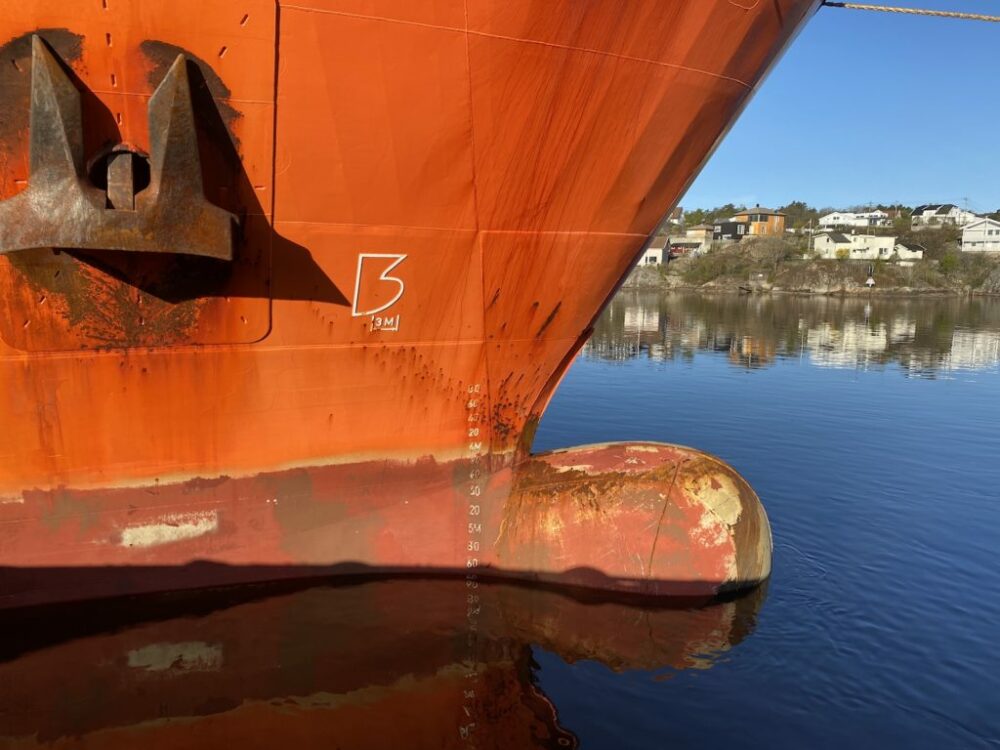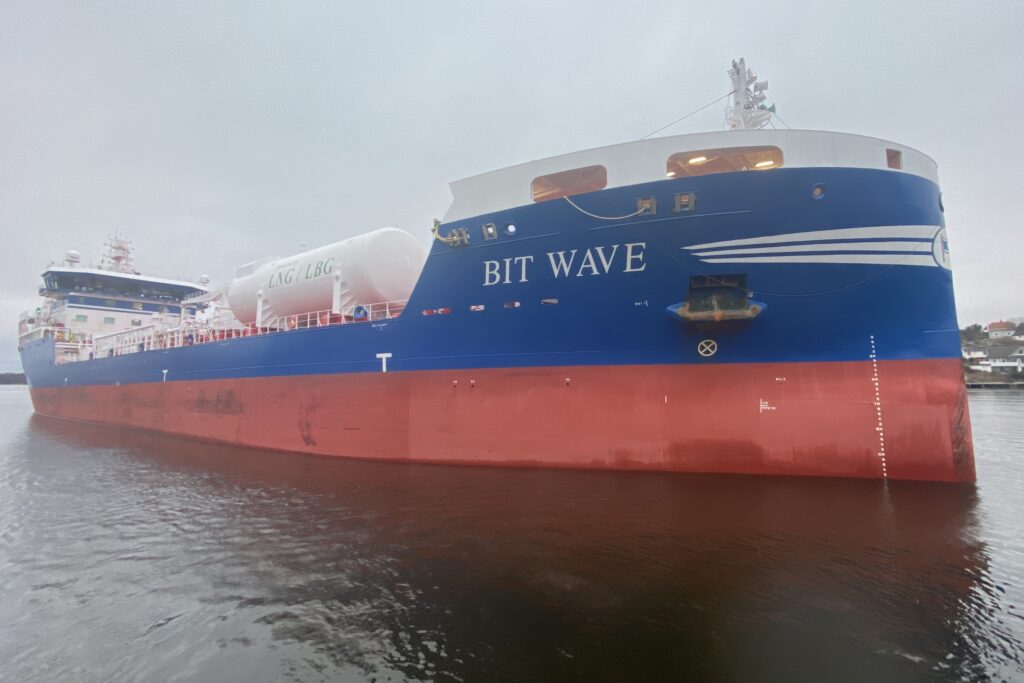The foremost part of a vessel is called the bow of a ship. The first thing anyone notices when a vessel approach is its forward section. How profound it is in terms of design; it not only serves as an aesthetic feature but also plays a huge functional part in reducing the resistance on a vessel.
In larger vessels, wave-making resistance is more profound than in slender hulls which add on to a majority of the total hull resistance. The bow of the ship plays the role of primary contact with the oncoming waves and helps in intersecting the water in an efficient manner to reduce the resistance components.
Let’s look into more details to find out how the bow plays an important part functionally, what is the bow of a ship and what the different types of bows are!
Functional Aspects Of The Bow On A Vessel
The bow of a vessel is designed in terms of location, dimension, and type such that it cancels out the incoming waves partially by forming a wave system at the bow. This not only reduces the overall resistance but also reduces the effective power required to propel the vessel.
The profile of the ship’s bow when designed accurately can help in forming a low-pressure field that effectively spreads out to the water level which reacts with the bow pressure wave thereby canceling out the effects from incoming waves.
Bow Design And Ship Bow Types
There are a lot of bow designs coming up in the industry but we will be focusing on the most profound designs in terms of design and functionality which are,
Bulbous Bow
The bulbous bow as the name suggests has a bulb profile that extends below the waterline from the bow of a ship. The most common type of bow is found on cargo vessels and other displacement vessels which are designed to carry a heavy load.
The design was developed in the early 90s and came into commercial use by the mid-90s. The bulb profile is effective in modifying the incoming wave profile such that the flow around the vessel changes which thereby reduces resistance and net power, which gives out better fuel economy and therefore follows decarbonization in the maritime industry. An overall reduction of 12-15% can be observed with vessels installed with bulbous bows.

The ships bow sections of the bulbs are divided into three namely, oval, nabla, and delta. The length of the bulbs typically defines the interference phase and the volume of the bulb defines the width of the wave system.
The bulbous bow also helps in reducing slamming effects which have a direct relation to structural aspects and also serves as a bumper in events of Collison. They also help in reducing the instabilities such as pitching. They are normally designed for a specific speed range and cannot be found in pleasure vessels like yachts as they constantly change their speed of operation.
The design of the bulbous bow of a ship is given close attention to improving the characteristics like providing slopes along the bub axis or the centerline to improve the flow of water.
Parabolic Bow

The parabolic bow has a parabolic profile and is a functional part of the overall design. The curved bottom helps in improving the hydrodynamics parameters of the hull. It has close characteristics with the cylindrical hull and works best when combined with a bulb.
Historically, first used by Christopher Columbus for his voyages and became extremely popular in the 20th century in the field of commercial and leisure vessels. They are highly efficient in fully loaded conditions.
Cylindrical Bow
The cylindrical bow has a circular cross-section and a flat bottom in relation to the hull. The profile tapers out gradually mostly from the highest point being the waterlines and the lowest point being the stern.
The design is considered so as to ensure structural integrity for the bow during heavily loaded events such as slamming.
They were usually found in classical wooden vessels and their particular shape and design helped in reducing the overall resistance characteristics.
Raked Bow
A raked bow is characterized by a profile that has an inverted slope from the water line to the deck. The angle is generally between the range of 40-35 degrees providing additional buoyancy at the fore-end of the vessel.
The addition of the raked bow, gives a vessel a much sharper look. Typically found on most modern vessels, this type of bow of a ship facilitates the housing of forwarding berth spaces such as master or VIP bedrooms.
Axe Bow

As the name suggests, the axe bow has a profile similar to that of an axe used for cutting wood. The same function can also be found as they are effectively characterized to slice through the water, also highly reducing the slamming effects of waves.
The design incorporates a narrow vertical line from the keel to the stem resembling the sharp section in an axe. The shape allows for the lower section to remain submerged most of the time thereby reducing the probability of occurrence of slamming. The spray from the waves at the entry of the vessel is also highly reduced.
The shape is incorporated in most of the sea-going vessels as it gives out excellent stability characteristics. On the downside, the maneuvering aspects of these kinds of vessels should be studied carefully and many effective types of machinery should be installed so as to provide efficient means of maneuvering operations as the submerged section imparts resistance to easy turning.
The Inverted Bow
Also called the reversed bow, it has a profile in the shape of most a curve which extends from the keel as the frontal point towards the deck. The forward-most point, in this case, is not the deck but the keel.
The inverted bow of ship helps in maximizing the waterline length which is proportional to the hull speed and thereby increasing the hull speed.
On the downside, they have very minimal forward buoyancy and this makes them dive into incoming waves which can increase the chances of having green water on board and corresponding stability problems.
They were used on leisure yachts and navy vessels such as battleships in the 20th century and are currently being used in the luxury yacht industry. However, the wide use of an inverted bow design and world-famous were brought by naval architects from Ulstein.
Ulstein X-Bow concept was launched in 2005 and by 2023 is already used and tested on more than 100 ships. The X-BOW concept is mainly used on the offshore fleet, but now Ulstein implements its innovative benefits on passenger ships, yachts, and expedition cruise vessels.
Construction And Design Aspects Of Bow
Close care is given in the design and construction stage for the bow of a ship as a maximum force acts on this part of the hull during events such as slamming or collision.
In terms of ship bow structure, finite element analysis is used by the majority of the designers in calculating the forces and identifying weak points the vessel may undertake during her life.
Proper reinforcements are done in terms of structural elements such as stiffener girders and plating so as to effectively transfer the loads without structural failure. Specific design considerations are given for ice breaker vessels where a different grade of steel is used to build the bow of the vessel as they undergo a huge amount of force at the bow of a ship when plying through rock-solid ice.
The hydrodynamic aspect of the bow of a ship also plays a vital role in reducing the overall resistance on the hull. The flow patterns on the bow are studied with the help of Computational Fluid dynamic studies so as to come up with effective design solutions.
Summary
We have seen the technical and design aspects of the bow and why it is an important part of a vessel. The vast majority of the vessels that ply nowadays have a similar bow on a ship as mentioned above. The right selection as always depends on the functionality and the aesthetic features which complement the entire design.
- Types of Gas Carriers as per IGC Code – April 22, 2025
- Wind-Assisted Propulsion Systems (WAPS): A Game Changer for Maritime Decarbonization – February 6, 2025
- 10 Boat Salvage Yards in California – January 25, 2025




